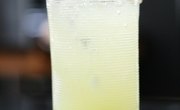
Electrode gel is essential when a doctor wants to apply electrodes to skin to read electrical impulses in the body. Whether you are interested in reading brain waves in an electroencephalogram-based study, or you want to record a prenatal electrocardiogram, electrode gel is vital. Without it, electrical impulses in the body cannot be recorded clearly. It is easy and cheap to make your own electrode gel. It is also a good idea to know how to make your own if you ever run out and you need a substitute in a hurry.
- Multimeter
- Salt
- Aloe vera gel
- Plastic resealable container
- Stirring utensil
Add a small amount of gentle detergent or shampoo when using electrodes on oily skin (e.g. a scalp).
If you use an oil-based gel, the salt won't dissolve.
Squirt about 100 ml of aloe vera gel into the plastic resealable container.
Add one tablespoon of salt and stir the mixture until the salt dissolves completely. With the addition of salt, the gel is now conductive.
Read the conductivity of the electrode gel by placing the two electrodes of the multimeter about one inch apart in the gel. If the resistance of the gel is too high for your purposes, add more salt.
Things You'll Need
Tips
Warnings
References
Tips
- Add a small amount of gentle detergent or shampoo when using electrodes on oily skin (e.g. a scalp).
Warnings
- If you use an oil-based gel, the salt won't dissolve.
About the Author
Sarah Parrish is a writer based in Heidelberg, Germany. She has contributed to websites such as 1H2O, where she won an award in citizen journalism. Parrish has also coauthored publications in scientific journals and received her bachelor's degree in psychology from the University of Oregon.
